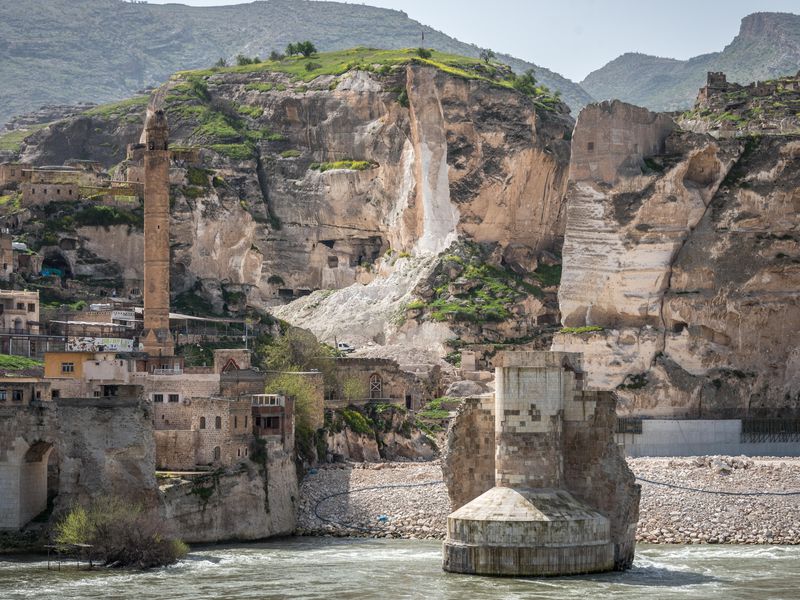The ancient city of Hasankeyf, which sits on the banks of the Tigris River in southeastern Turkey, is believed to be one of the world’s oldest continuously inhabited settlements, with a human history stretching back some 10,000 years. Neolithic peoples carved caves into cliff sides, and Hasankeyf’s modern inhabitants continue to live in those dwellings today. Romans, Byzantines, Mongols and Arabs have all left their mark on the city. But within the next few weeks, this precious historic site could disappear forever, submerged under water as part of a controversial dam project.
Plans for the Ilusi dam have been in the works for decades—as have bitter efforts to put a stop to it. According to Pinar Sevinclidir of CBS News, the project was first devised in the 1950s, but due to legal battles, only broke ground in 2006. The dam is slated to irrigate the surrounding area and fuel a power plant, which will in turn generate 4,200 gigawatts of electricity for Turkey each year—“similar in capacity to a small nuclear plant,” Sevinclidir notes.
Late last month, reports Rob Picheta of CNN, the governor of the region announced that Hasankeyf will be cordoned off on October 8, signalling that officials are intending to move forward with their plan to flood the ancient city. Proponents maintain that the dam will foster local development and create jobs. But horrified opponents say that project comes at an intolerable cost.
Among Hasankeyf’s treasures are a 13th-century palace of the Artuqid dynasty, a 15th-century mosque and the ruins of a Byzantine citadel. Eight monuments—among them half of a Roman city gate and the hulking Zeynel Bey Mausoleum—have been relocated to safer ground at a plain some two miles away from Hasankeyf. But the rest of the city, with all its rich history, will be inundated. Only the citadel will peek up from above the water.
“It’s not just our story [that will be lost],” Ridvan Ayhan, a member of the Initiative to Keep Hasankeyf Alive, tells Tessa Fox of the Guardian. “[I]t’s also your story, because it’s the human story.”
Among other measures, activists have tried to obtain UNESCO heritage status for the city, but to no avail. “UNESCO said the culture ministry has to apply for it,” Ayhan tells Fox. “We wrote to the ministry but no answer … It’s their duty but they didn’t do anything.” Successive legal battles have also proved fruitless, with the European Court of Human Rights ultimately deeming the case inadmissible earlier this year.
It’s not just Hasankeyf that is affected by the new dam; 199 settlements in total will be impacted, and thousands of people are being forced to leave their homes. The government has built a new town with 710 homes for the displaced, but many residents do not want to resettle.
“I need to start all over again,” Firat Argun, whose ancestors have lived in Hasankeyf for 300 years, tells Sevinclidir. “I feel like I have just arrived in this world. I don’t know if it is going to be good or bad.”
Then there are the ecological threats. As Smithsonian reported in 2009, the dam project will put hundreds of species at risk. Some are vulnerable or endangered, including the Euphrates softshell turtle and the red‐wattled lapwing, according to the Guardian’s Constanze Letsch.
Though time seems to be running out for Hasankeyf and its environs, activists are not giving up hope. The Initiative to Keep Hasankeyf Alive has called for a “global day of action” on September 14, asking people to take to Twitter with the hashtag #SaveHasankeyf and to use art as a means of protesting on behalf of the region
Source: Smart News



